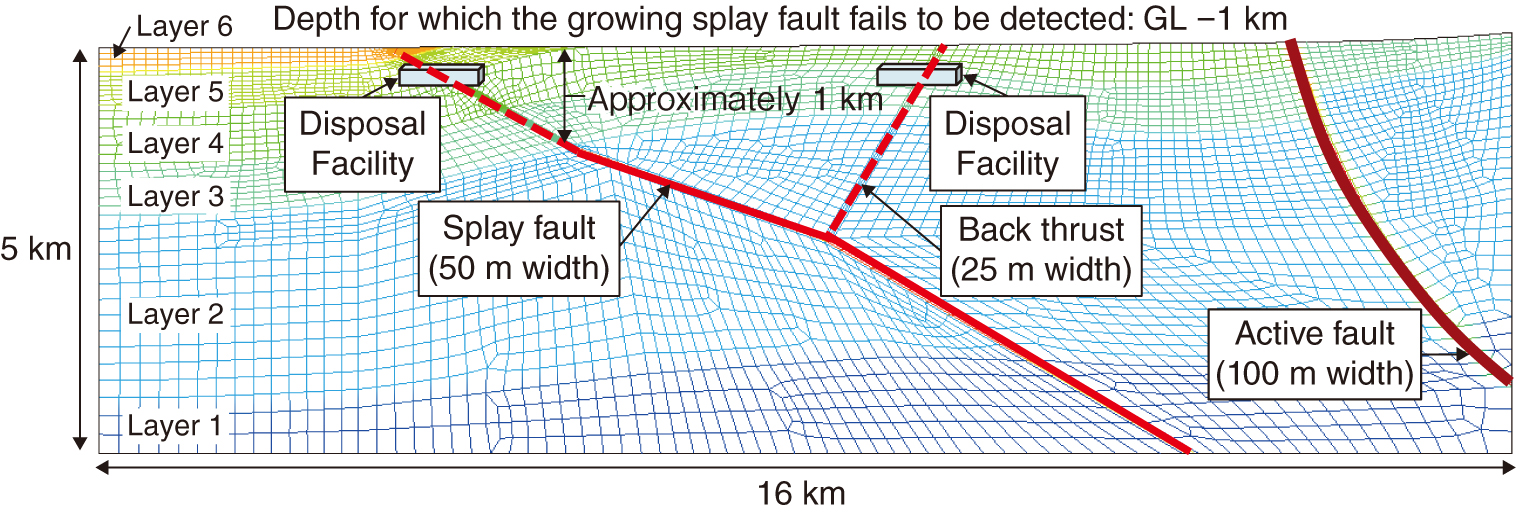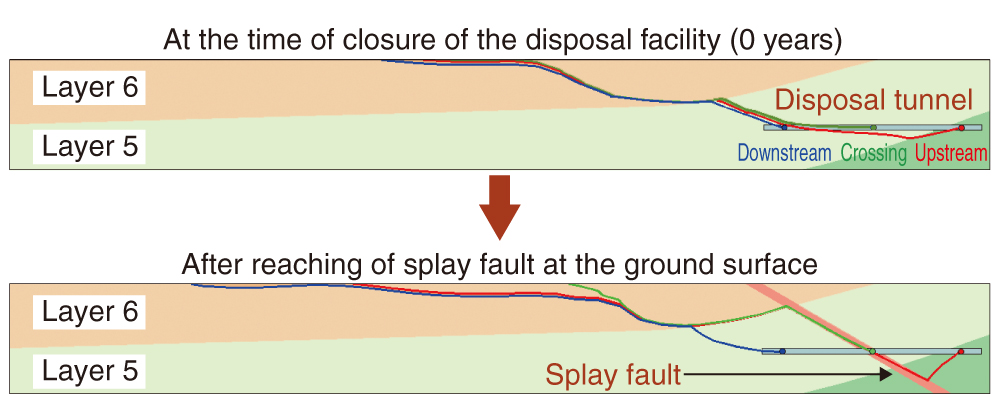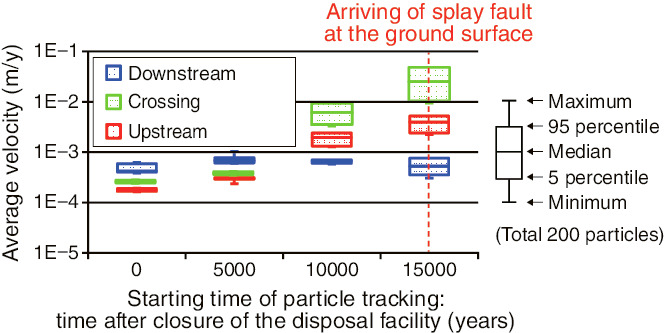
Fig.2-12 The hydrogeological model for the growth of splay faults (a splay fault and a back thrust)

Fig.2-13 The migration paths from the disposal tunnel crossing the splay fault (GL −300 m)

Fig.2-14 The average velocities from the disposal tunnel to the ground surface (the increment of the fault: 500 m per seismic activity)
For the geological disposal of high-level radioactive waste including long-lived nuclides, the safety over hundreds of thousands of years needs to be assessed. It is required that geological and climatic-disruptive events that can affect disposal facilities considerably during this period should be avoided when selecting a site. However, it has been pointed out that some events cannot be avoided in advance due to the difficulty in predicting the future over hundreds of thousands of years. For example, it is necessary for seismic activities to avoid active faults; however, it has been pointed out that splay faults (faults derived from active faults deep underground) and back thrusts (faults which form with the opposite inclination to the splay fault) cannot be avoided in advance due to difficulties with prediction and detection. In this study, we developed a procedure for assessing the influence of the growth of splay faults (the splay fault and the buck thrust) and evaluated the effect on groundwater flow around a geological-disposal system.
To model splay faults, we investigated examples in Japan and set the conditions including the growth angle and the increment of a fault per seismic activity. Based on these conditions, we created a hydrogeological model for the growth of splay faults (Fig.2-12) and carried out unsteady two-dimensional groundwater-flow analysis. Furthermore, we assumed that there were disposal tunnels of 1 km that crossed the splay faults, and divided these tunnels into three regions (the upstream, crossing, and downstream regions). We implemented particle-tracking analysis for 200 particles located in each region and estimated the migration path and the travel time to the ground surface of each particle while changing its starting time. From the results, we found two important effects of splay-fault growth, namely change of its path and change of the average velocity.
The migration paths from both the crossing and upstream regions are changed into upward-migration routes along the splay fault in accordance with fault growth (Fig.2-13). The average velocity from the disposal tunnel to the ground surface becomes higher than that before fault growth (maximum one/two orders of magnitude for the upstream/crossing region) (Fig.2-14). This indicates that the travel time of nuclides can be shortened by splay-fault growth. By back-thrust growth, the downward flow along the back thrust increased by one order of magnitude. This result suggests that fault growth can lead to inflow of oxidizing groundwater around the ground surface into the vicinity of a disposal tunnel, which may affect safety functions of engineering barriers.
This study includes the results of contract work funded by the Secretariat of the Nuclear Regulation Authority (NRA), Japan.